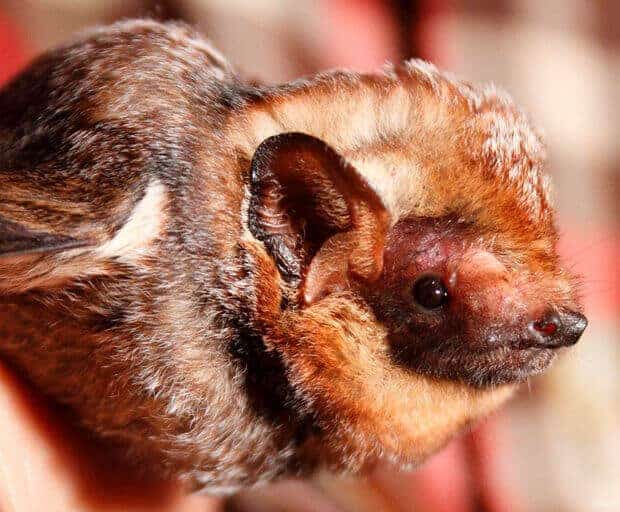The University of Hawaiʻi at Hilo took part in a collaborative research project showing there are two evolutionarily distinct groups of Hawaiian hoary bats, with one group a more ancient arrival.
The use of sophisticated DNA sequencing has determined that Hawaiʻi’s state land mammal, the Hawaiian hoary bat, migrated to the islands from the Pacific coast of North America in two separate waves more than 9,000 years apart.
“Because the Hawaiian hoary bat is the only living native land mammal in Hawaiʻi and is on the U.S. Fish and Wildlife Service’s endangered species list we want to know everything possible about its genetic history, relationships to other bats, and if there are unique subpopulations on different Hawaiian islands,” says Amy Russell, associate professor of biology at Grand Valley State University and lead author of the study.
This feat represents the longest overwater flight followed with the founding of a new population for any bat, of which there are 1,300 species. The new study estimates that these migrations from mainland North America happened around 800 years ago and 10,000 years ago.
Providing insight into Hawaiʻi’s only native terrestrial mammal
Until recently, little was known about the genetics or ecology of Hawaiʻi’s only native terrestrial mammal, and while many questions still remain this study provides insight previously not possible using just morphology or fossil data.
“We used tiny bits of wing tissue and powerful DNA sequencing and analytical tools to estimate both the time and place of origin for this unique and cryptic mammal,” says Kevin Olival, senior research scientist at EcoHealth Alliance and study co-author.
DNA sampling of Hawaiian hoary bats for conservation genetics studies began in 2004 and is ongoing.
“Future genetic studies will also help us to better understand local population structure and the potential for bat migration between islands of the archipelago,” saysCorinna Pinzari, a researcher with the Hawaiʻi Cooperatives Studies Unit at the University of Hawaiʻi at Hilo.
Frank Bonaccorso, a wildlife ecologist from the U.S. Geological Survey, and colleague Liam McGuire now at Texas Tech University had previously modeled the path that hoary bats might have taken in a successful colonization flight scenario, and found that the shortest possible flight distance from San Francisco to Maui, approximately 3,600 kilometers, is highly feasible with normal tailwind assistance from the prevalent trade winds.
“Our present findings will be useful for the re-evaluation of the bat’s conservation status,” explains Bonaccorso, a co-author on the study, “because we demonstrate that there are two evolutionarily distinct groups of Hawaiian hoary bats with one group a more ancient arrival.” The journal article, “Two Tickets to Paradise: Multiple Dispersal Events in the Founding of Hoary Bat Populations in Hawaiʻi,” was published on June 17 by the journal PLOS ONE.


